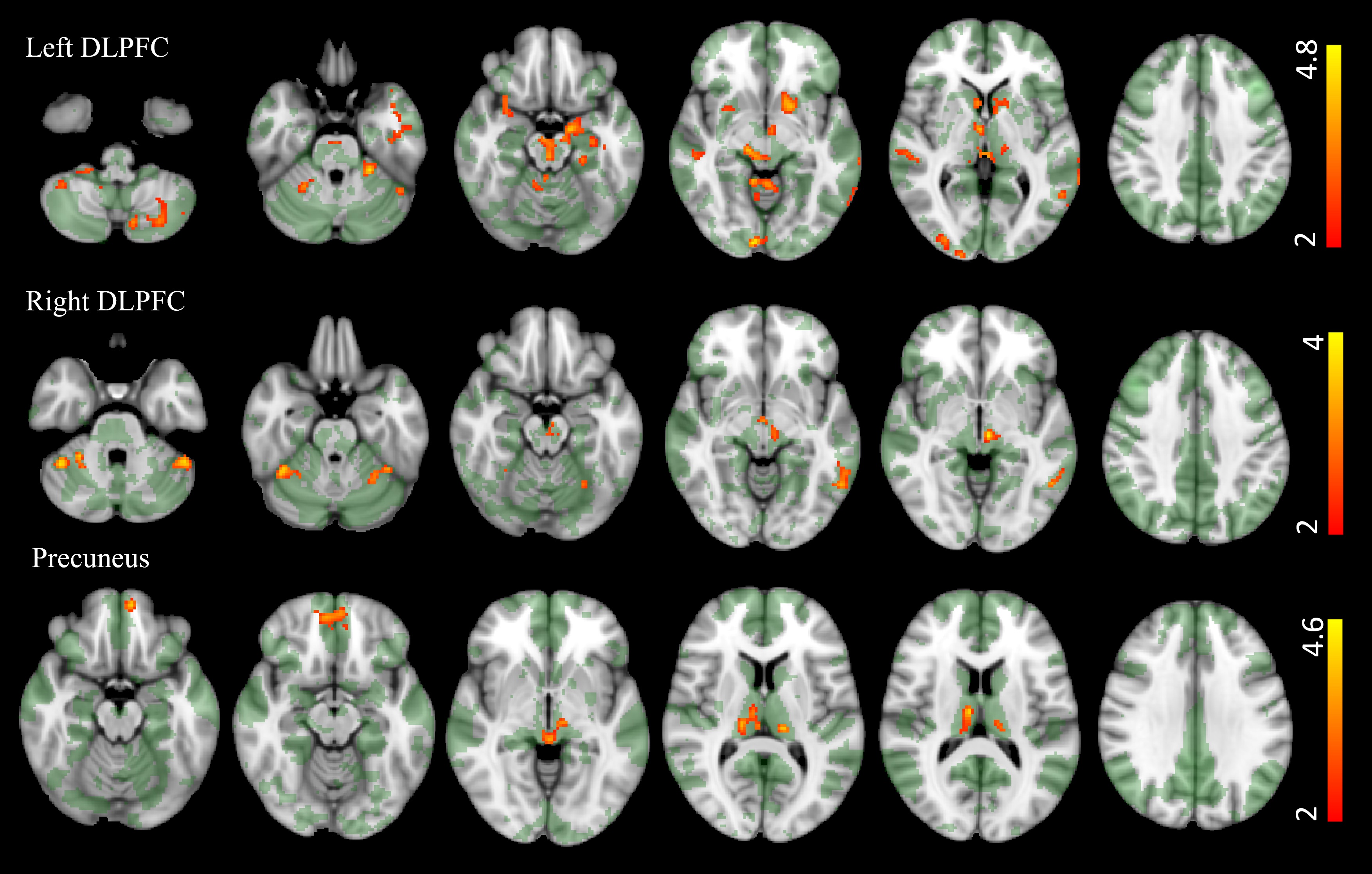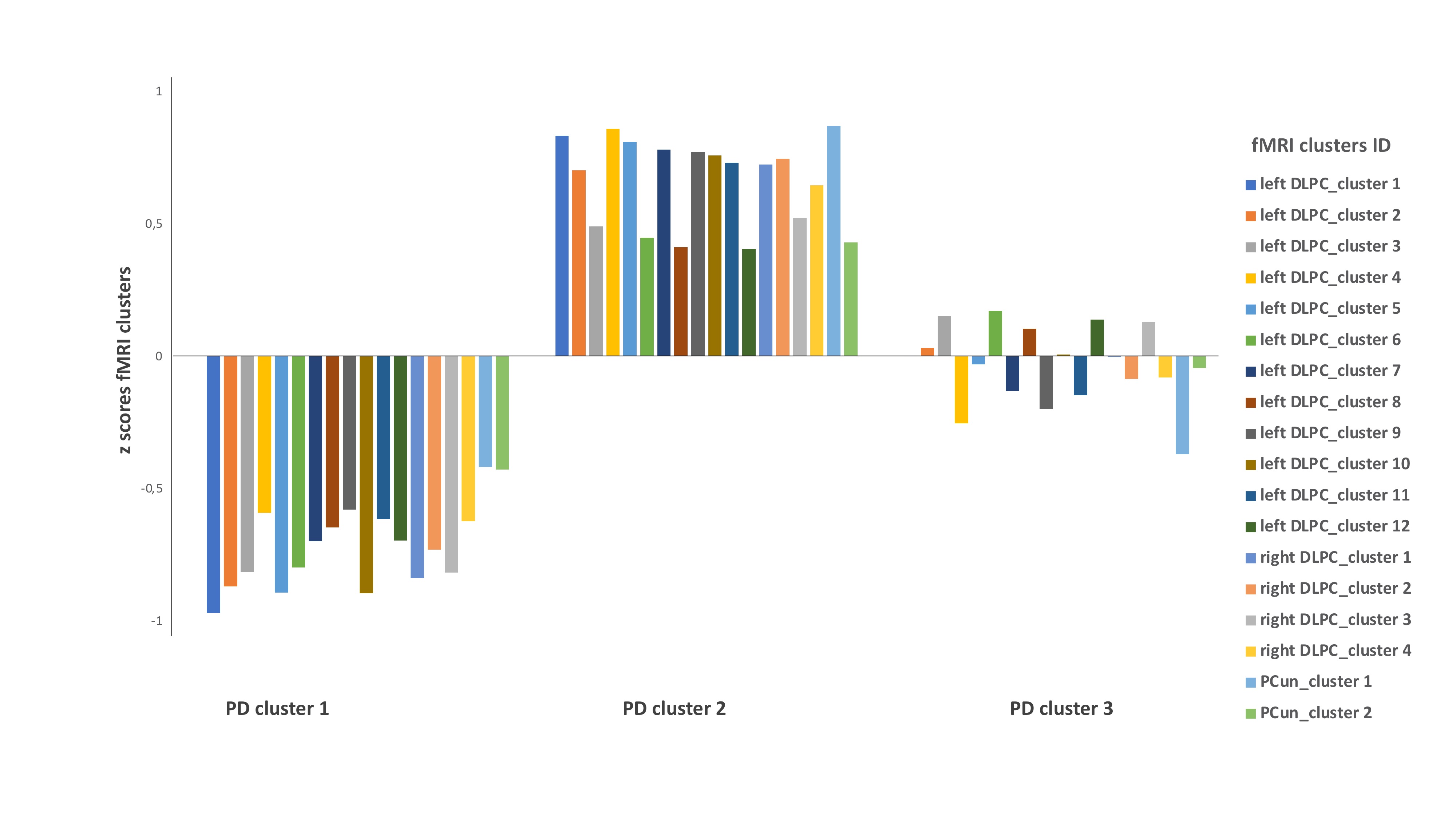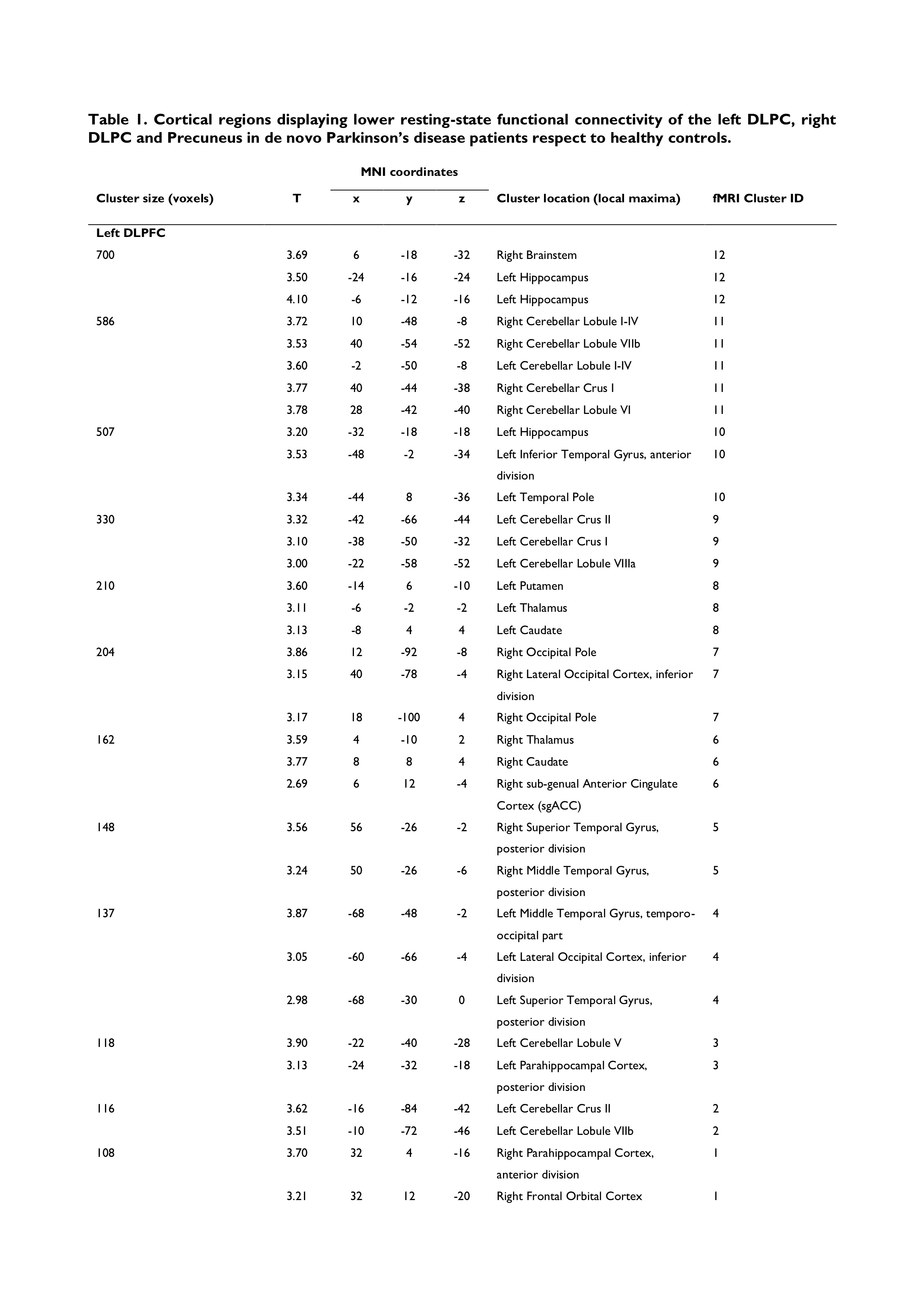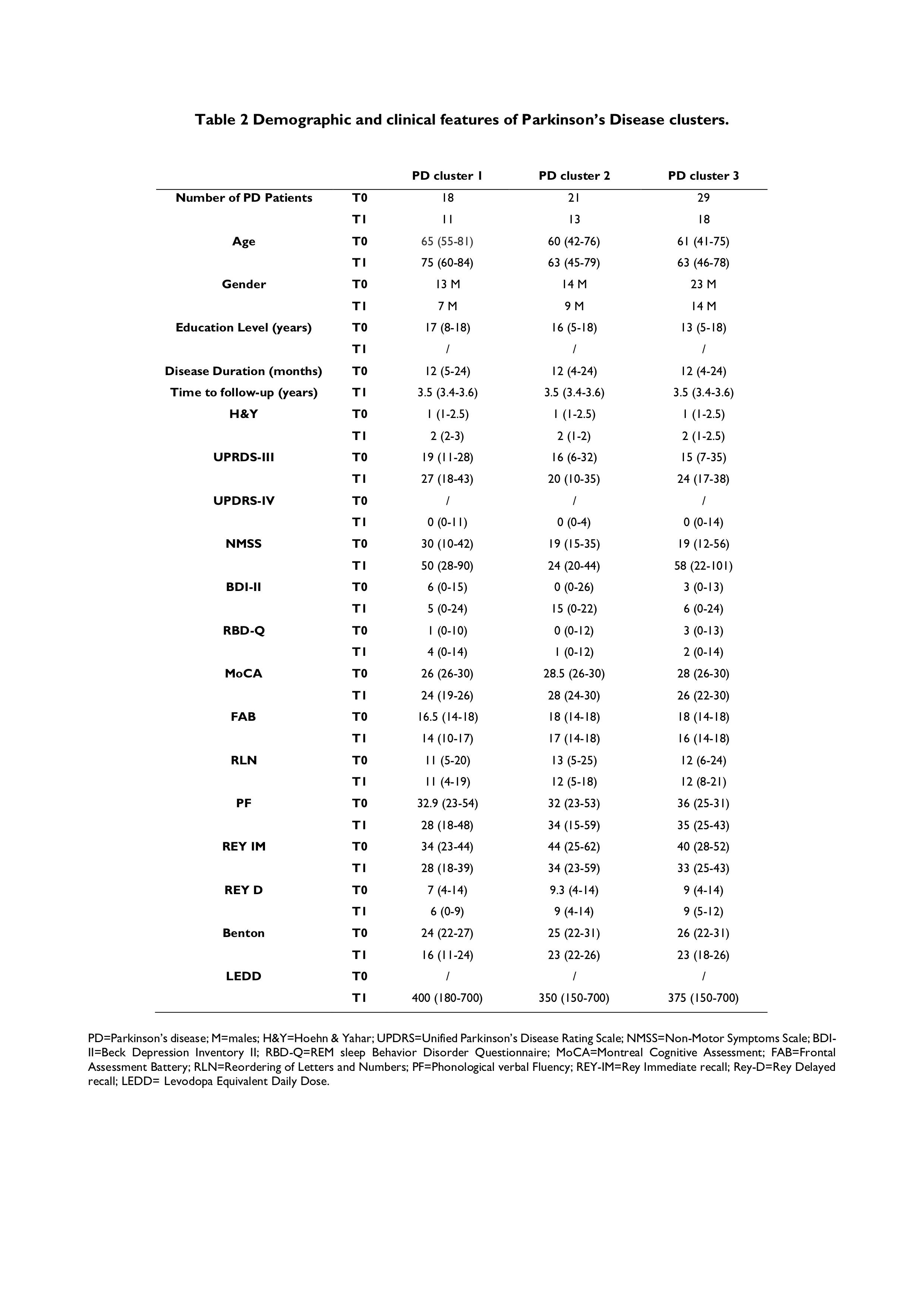Category: Parkinson's Disease: Cognitive functions
Objective: To verify whether connectivity changes in the dorsolateral prefrontal cortex (DLPC) and the precuneus (PCun) can predict cognitive phenotypes in de novo Parkinson’s disease (PD) without mild cognitive impairment (MCI), using an MRI data-driven approach.
Background: Previous studies attempted to distinguish PD patients with a prevalent dysexecutive syndrome from patients with visuospatial deficits, to explain differences in cognitive progression [1,2]. The DLPC and the PCun represent two central hubs in networks underlying respectively fronto-executive and visuospatial functions [3,4].
Method: 68 de novo PD patients without MCI and 31 healthy controls (HC) underwent 3T-fMRI to investigate resting-state functional connectivity (rsFC) of the DLPC and the PCun. A non-hierarchical cluster analysis on PD rsFC values was performed to identify clusters of patients sharing common patterns of connectivity. Clinical differences among PD clusters have been investigated at baseline (T0) and after a 3.5-year follow-up (T1).
Results: Patients displayed reduced rsFC of both DLPC and PCun with several cortical and subcortical areas compared to HC [Fig1; Table 1]. Cluster 1 was defined by lower values of rsFC, while cluster 2 and 3 respectively by higher and intermediate values of rsFC [Fig2]. Cluster 1 was lower performing in global cognition, fronto-executive and memory domains compared to cluster 2 and 3 at T0. At T1, a more evident worsening in global cognition, fronto-executive and visuo-spatial functions, non-motor and motor symptoms was observed in cluster 1 and 3 compared to cluster 2 [Table 2].
Conclusion: Early rsFC changes of the DLPC and the PCun can predict cognitive phenotypes in cognitively intact de novo PD patients. Despite cognitive performance being still in the range of normality at T0, PD cluster 1 could indicate a malignant cognitive phenotype, while PD cluster 2 and 3 respectively benign and intermediate cognitive phenotypes at T0. The longitudinal observations at T1 strengthened the predictive power of our model and highlighted the role of DLPC and PCun rsFC as potential cognitive biomarkers in PD. Our cognitive phenotypes shared overlapping features with previously described motor subtypes in PD, thus suggesting that early pathological involvement of cognitive networks may represent the main determinant of clinical heterogeneity among PD patients.
Figure 1 rsFC in de novo PD patients vs HC
Figure 2 Clustering of de novo PD patients
Table 1
Table 2
References: 1. Kehagia AA, Barker RA, Robbins TW. Cognitive impairment in Parkinson’s disease: the dual syndrome hypothesis. Neurodegener Dis. 2013;11(2):79-92. doi:10.1159/000341998
2. Williams-Gray CH, Evans JR, Goris A, et al. The distinct cognitive syndromes of Parkinson’s disease: 5 year follow-up of the CamPaIGN cohort. Brain. 2009;132(Pt 11):2958-2969. doi:10.1093/brain/awp245
3. MacDonald AW, Cohen JD, Stenger VA, Carter CS. Dissociating the role of the dorsolateral prefrontal and anterior cingulate cortex in cognitive control. Science. 2000;288(5472):1835-1838. doi:10.1126/science.288.5472.1835
4. Cavanna AE, Trimble MR. The precuneus: a review of its functional anatomy and behavioural correlates. Brain. 2006;129(Pt 3):564-583. doi:10.1093/brain/awl004
To cite this abstract in AMA style:
MI. de Bartolo, A. Ojha, G. Leodori, C. Piervincenzi, G. Vivacqua, S. Pietracupa, M. Costanzo, F. D'Antonio, S. Barbetti, R. Margiotta, G. Bruno, A. Conte, A. Berardelli, G. Fabbrini, P. Pantano, D. Belvisi. Predicting cognitive phenotypes in de novo Parkinson’s disease: an fMRI data-driven approach. [abstract]. Mov Disord. 2024; 39 (suppl 1). https://www.mdsabstracts.org/abstract/predicting-cognitive-phenotypes-in-de-novo-parkinsons-disease-an-fmri-data-driven-approach/. Accessed December 16, 2025.« Back to 2024 International Congress
MDS Abstracts - https://www.mdsabstracts.org/abstract/predicting-cognitive-phenotypes-in-de-novo-parkinsons-disease-an-fmri-data-driven-approach/




